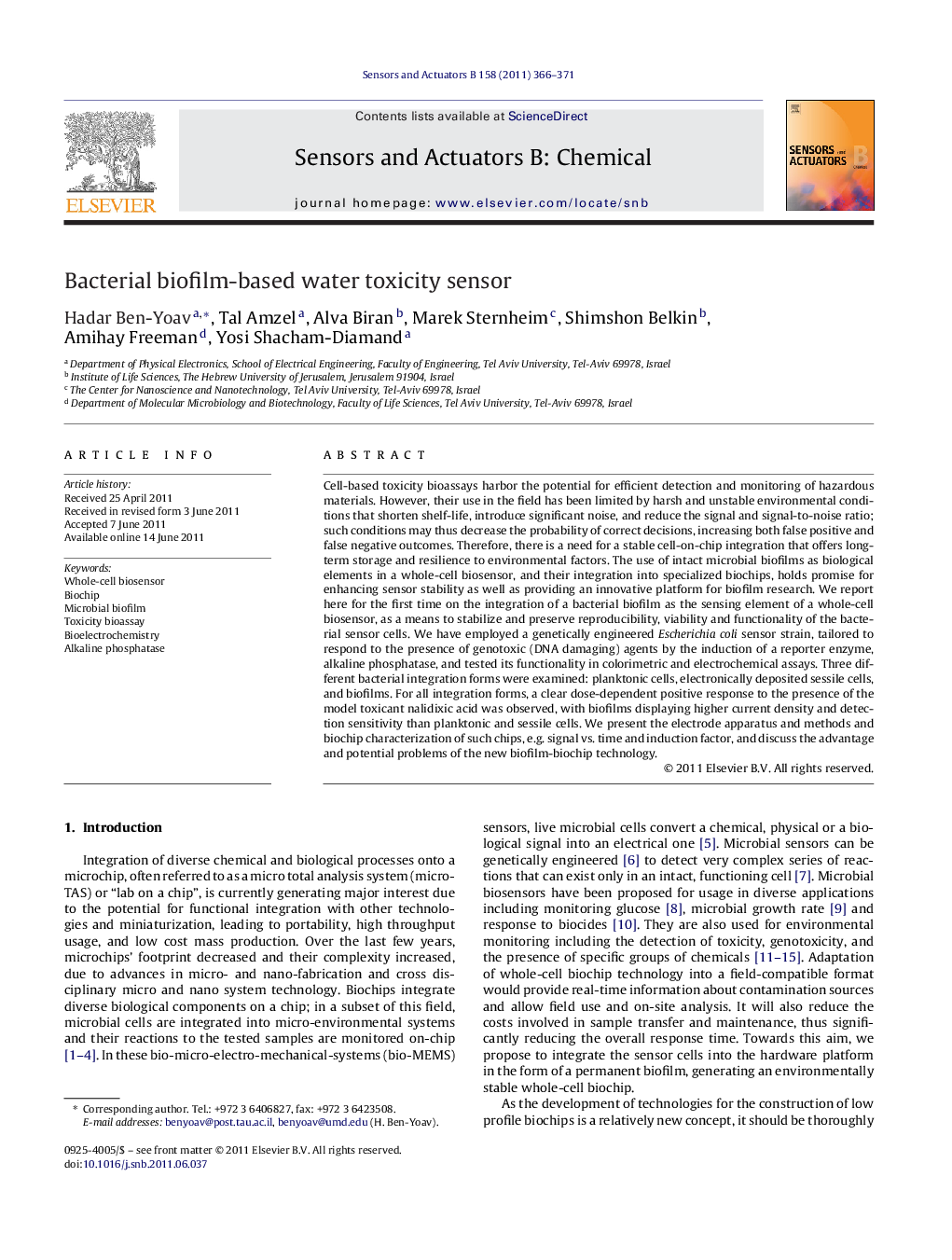| Article ID | Journal | Published Year | Pages | File Type |
|---|---|---|---|---|
| 740779 | Sensors and Actuators B: Chemical | 2011 | 6 Pages |
Cell-based toxicity bioassays harbor the potential for efficient detection and monitoring of hazardous materials. However, their use in the field has been limited by harsh and unstable environmental conditions that shorten shelf-life, introduce significant noise, and reduce the signal and signal-to-noise ratio; such conditions may thus decrease the probability of correct decisions, increasing both false positive and false negative outcomes. Therefore, there is a need for a stable cell-on-chip integration that offers long-term storage and resilience to environmental factors. The use of intact microbial biofilms as biological elements in a whole-cell biosensor, and their integration into specialized biochips, holds promise for enhancing sensor stability as well as providing an innovative platform for biofilm research. We report here for the first time on the integration of a bacterial biofilm as the sensing element of a whole-cell biosensor, as a means to stabilize and preserve reproducibility, viability and functionality of the bacterial sensor cells. We have employed a genetically engineered Escherichia coli sensor strain, tailored to respond to the presence of genotoxic (DNA damaging) agents by the induction of a reporter enzyme, alkaline phosphatase, and tested its functionality in colorimetric and electrochemical assays. Three different bacterial integration forms were examined: planktonic cells, electronically deposited sessile cells, and biofilms. For all integration forms, a clear dose-dependent positive response to the presence of the model toxicant nalidixic acid was observed, with biofilms displaying higher current density and detection sensitivity than planktonic and sessile cells. We present the electrode apparatus and methods and biochip characterization of such chips, e.g. signal vs. time and induction factor, and discuss the advantage and potential problems of the new biofilm-biochip technology.
